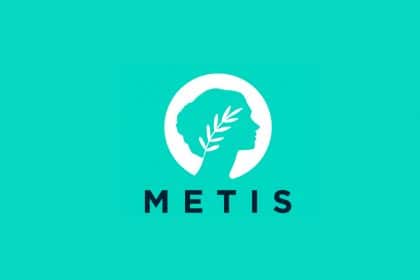Metis can drastically decrease the wait time between layer-two and layer-one network communications.
As the most widely adopted decentralized smart contract platform, Ethereum is a dApp powerhouse, but it has become a victim of its own success. Metis is launching a layer-two solution on top of the Ethereum network to mitigate these problems, eliminating high transaction fees and slow transaction times with a more efficient alternative. Metis has released the details behind its Metis Rollup and Alpha testnest, bringing the market one step closer to a highly usable and scalable option.
Meet Metis
Metis will allow defi projects to test and manage their dApps through a new network layer, offering developers much greater capabilities than are currently available. With the opportunity to test their application in a more functional environment, dev teams can get a clearer picture of how their dApp is performing and where there’s scope for improvement. This will not only make dApp deployment more straightforward and cost-effective but will also simplify the testing process for users and development teams.
Besides a highly accessible application testing atmosphere, Metis allows for much greater functionality than Ethereum. This includes features like the ability to batch multiple transactions into a single layer-two transaction before relaying it to the mainchain to ensure finality. Users can also take advantage of micropayments, business applications, and incentivized social media dApps, all of which are impossible with Ethereum’s current two to three-digit transaction fees.
Micropayments were supposed to be one of the primary use cases for Ethereum, but with significant network congestion, this will now only be possible through a viable layer-two solution. Even Vitalk Buterin, the founder and creator of Ethereum, has advocated for rollups as a possible ETH scaling solution, showing the opportunities that layer two rollups present.
Building on Existing Rollup-Based Solutions
Through Metis, shortcomings inherent to other layer-two rollups have been resolved. For example, Metis can drastically decrease the wait time between layer-two and layer-one network communications. It can also provide greater decentralization by utilizing multiple VMs (virtual machines), offers better privacy by storing sensitive data on IPFS, introduces easy to build microservices through its prebuilt smart contract templates and tools, and even allows shorter asset withdrawal times through its proprietary Rangers system.
If you are a defi project, dApp developer, or community leader, you are invited to participate in Metis’ Alpha testnet launch and see the layer-two capabilities for yourself. By introducing a feasible layer-two system that prioritizes the user experience, Metis has the potential to power a new wave of decentralized applications running on the Ethereum network.
next